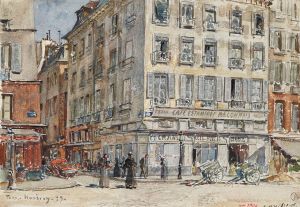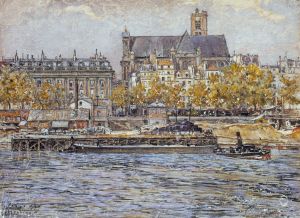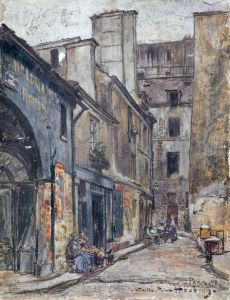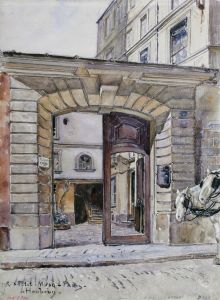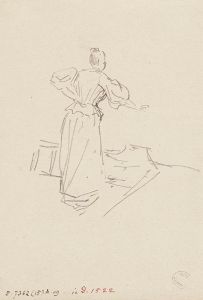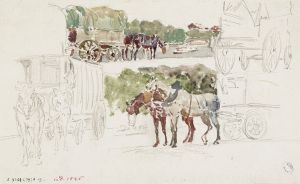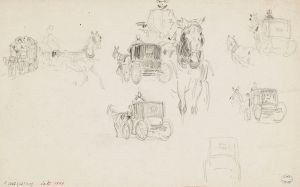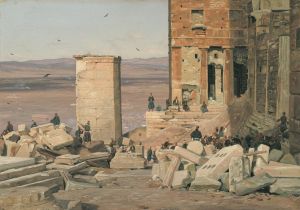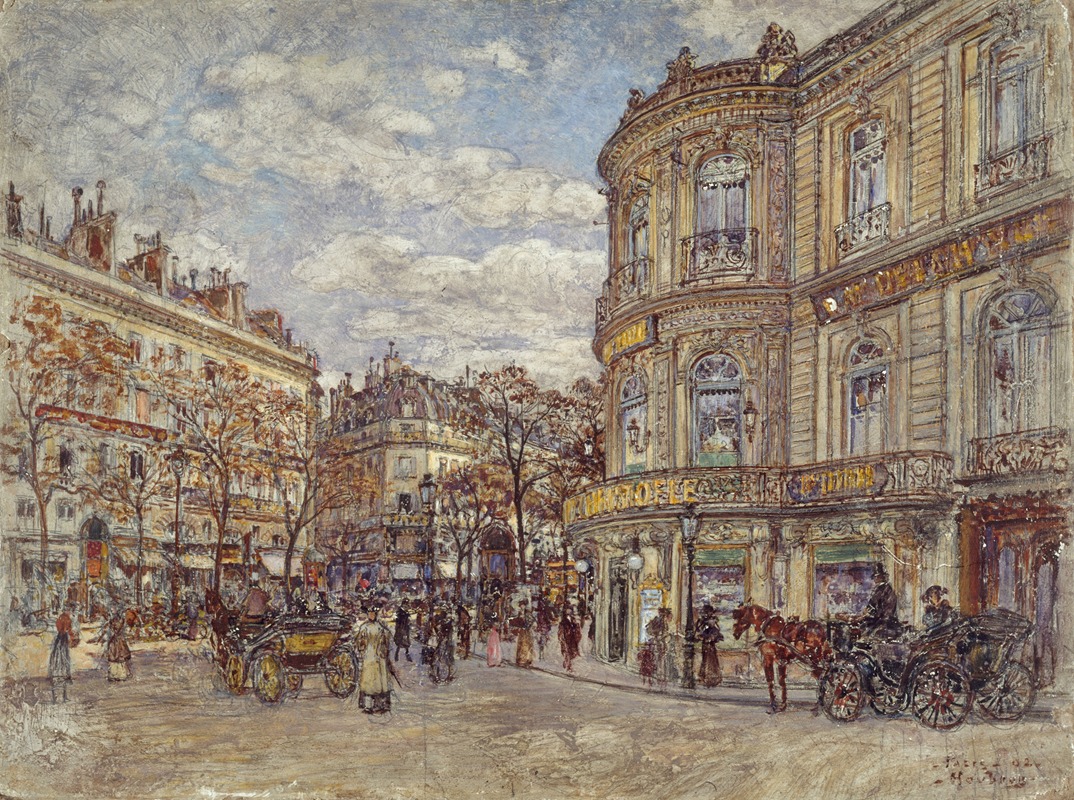
Le Pavillon de Hanovre, rue Louis-le-Grand
A hand-painted replica of Frédéric Houbron’s masterpiece Le Pavillon de Hanovre, rue Louis-le-Grand, meticulously crafted by professional artists to capture the true essence of the original. Each piece is created with museum-quality canvas and rare mineral pigments, carefully painted by experienced artists with delicate brushstrokes and rich, layered colors to perfectly recreate the texture of the original artwork. Unlike machine-printed reproductions, this hand-painted version brings the painting to life, infused with the artist’s emotions and skill in every stroke. Whether for personal collection or home decoration, it instantly elevates the artistic atmosphere of any space.
Le Pavillon de Hanovre, rue Louis-le-Grand is a painting by the French artist Frédéric Houbron. Houbron, an artist known for his detailed and evocative urban landscapes, captures a significant architectural landmark in this work. The painting depicts the Hanover Pavilion, originally located on Rue Louis-le-Grand in Paris, France.
The Hanover Pavilion, or Pavillon de Hanovre, was an 18th-century structure designed by the renowned French architect Jean-Michel Chevotet. It was commissioned by the Duke of Richelieu and constructed between 1758 and 1760. The pavilion was initially part of the Hôtel de Richelieu, a grand residence that showcased the opulence and architectural innovation of the period. The building exemplified the classical style with its symmetrical design, elegant proportions, and intricate decorative elements.
In Houbron's painting, the pavilion is portrayed with meticulous attention to detail, highlighting its architectural features and the surrounding urban environment. The artist's use of light and shadow brings out the textures of the stone façade and the lush greenery that frames the building. The painting not only serves as a visual record of the pavilion but also reflects the historical context of Paris during the time it was created.
The Rue Louis-le-Grand, where the pavilion was originally situated, is a notable street in the 2nd arrondissement of Paris. Named after King Louis XIV, the street has been home to various significant buildings and has played a role in the city's architectural and cultural history. The Hanover Pavilion itself underwent several transformations and relocations over the years. In the 19th century, it was dismantled and moved to the Parc Monceau, where it was reassembled and continues to stand today.
Frédéric Houbron's depiction of the Hanover Pavilion is an important contribution to the documentation of Parisian architecture. His work provides insight into the city's historical landscape and the evolution of its built environment. The painting is appreciated not only for its artistic merit but also for its historical significance, offering viewers a glimpse into the past and the architectural heritage of Paris.
Houbron's artistic style is characterized by his precise and realistic portrayal of urban scenes. His ability to capture the essence of a place through careful observation and detailed rendering makes his work valuable for both art enthusiasts and historians. Le Pavillon de Hanovre, rue Louis-le-Grand stands as a testament to Houbron's skill and his dedication to preserving the memory of Paris's architectural landmarks.
Overall, Le Pavillon de Hanovre, rue Louis-le-Grand by Frédéric Houbron is a notable work that combines artistic excellence with historical documentation. It remains an important piece for understanding the architectural and cultural history of Paris, as well as the legacy of the Hanover Pavilion.





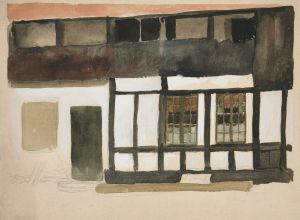
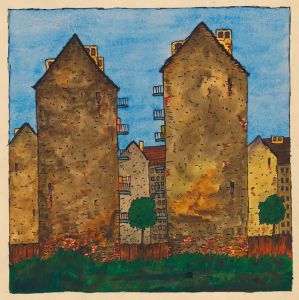
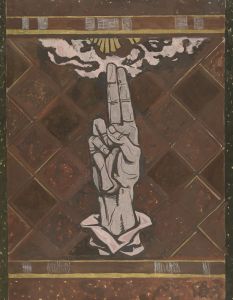
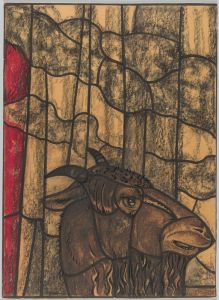
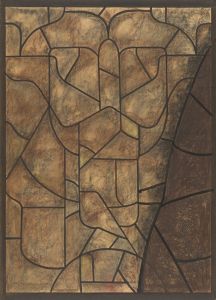
![Design for unidentified restaurant, possibly Dunhall’s Restaurant, New York, NY.] [Wall treatment, sketch 2](/imgs/249303/s/winold-reiss-design-for-unidentified-restaurant-possibly-dunhalls-restaurant-new-york-ny-wall-treatment-sketch-2-fcb08634.jpg)
